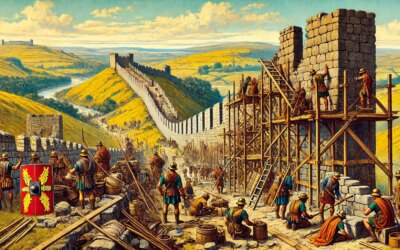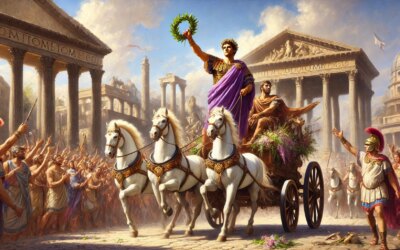Introduction: Rome at the Edge of the World
In the late summer of 83 AD, the Roman general Gnaeus Julius Agricola led his legions deep into the mist-shrouded Highlands of northern Britain. There, at a place Tacitus would later record as Mons Graupius, he confronted the last great coalition of Caledonian tribes. The ensuing battle marked the northernmost advance of Roman power in Britain—a bold but ultimately ephemeral push into a land of rugged terrain and fierce resistance.
Agricola and the Roman Campaign in Britain
Appointed governor of Britain in 77 AD, Agricola was a capable administrator and seasoned general. Over the next six years, he extended Roman control across much of modern-day England and Wales. By 83 AD, he turned his gaze northward toward Caledonia (Scotland), seeking to bring the entire island under Roman dominion. His campaigns were marked by swift movement, strategic fort-building, and efforts to win over local tribes through both force and diplomacy.
The Approach to Mons Graupius
According to Tacitus—Agricola’s son-in-law and biographer—the Roman army advanced into the Highlands and encountered a large force of Caledonians led by a chieftain named Calgacus. The Roman force, though outnumbered, was better trained and equipped. Agricola organized his legions with auxiliaries in the vanguard and cavalry on the flanks. The stage was set for a dramatic confrontation between Roman order and tribal defiance.
The Battle Unfolds
The Caledonians took a position on high ground, shouting war cries and brandishing long swords. Agricola, keeping his legionaries in reserve, sent forward his auxiliary cohorts, who advanced in tight formation up the hill. Fierce hand-to-hand combat followed, with the Roman discipline and short swords prevailing over the wild charges of the Caledonians. Roman cavalry encircled the flanks, completing the rout. Tacitus claims that over 10,000 Caledonians were killed, compared to 360 Roman casualties—figures modern historians view with skepticism.
Aftermath and Retreat
Despite the resounding victory, Agricola did not press further north. His fleet circumnavigated the northern coast of Britain, proving that Britain was indeed an island. Soon after, Agricola was recalled to Rome—possibly due to Emperor Domitian’s jealousy of his growing fame. Without continued military support, Rome never consolidated control over Caledonia. The land beyond the Forth-Clyde line remained outside imperial authority.
The Historical Debate
The precise location of Mons Graupius remains debated among historians and archaeologists. Sites in Aberdeenshire are often proposed, but no consensus has emerged. Similarly, the reliability of Tacitus’ account, though vivid and dramatic, is questioned for its political and familial bias. Nevertheless, the battle stands as a symbol of Rome’s ambition—and its limits—on the periphery of empire.
Legacy of Agricola’s Campaign
Agricola’s northern campaign did not result in lasting Roman occupation, but it showcased Rome’s capacity to project power across even the harshest frontiers. The construction of forts and roads during his tenure laid groundwork for later defenses, including the Antonine Wall and, ultimately, Hadrian’s Wall. Agricola himself became a model of virtuous leadership in Roman literature, immortalized by Tacitus as an embodiment of courage, discipline, and moral clarity.
Conclusion: The Empire’s Distant Roar
The Battle of Mons Graupius was the climax of Rome’s northern ambitions in Britain. Though its victory faded into the mists of the Highlands, the legacy of Agricola’s campaign endures as a testament to the empire’s reach—and to the resilience of the peoples it sought to conquer. In the wild lands of Caledonia, the echoes of Roman steel clashed with the raw cry of freedom, and history recorded both.






